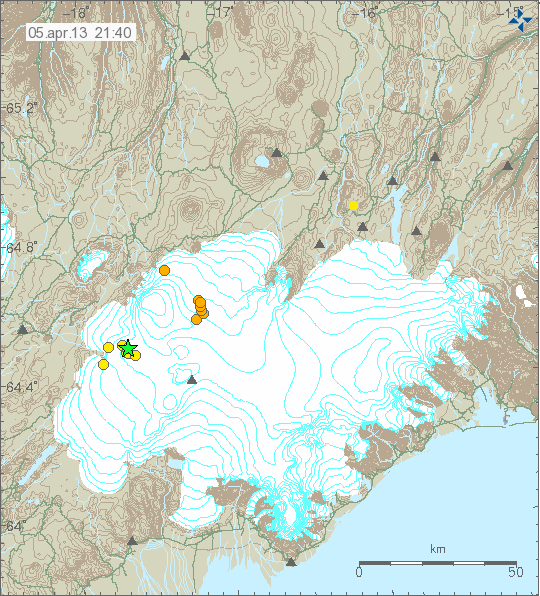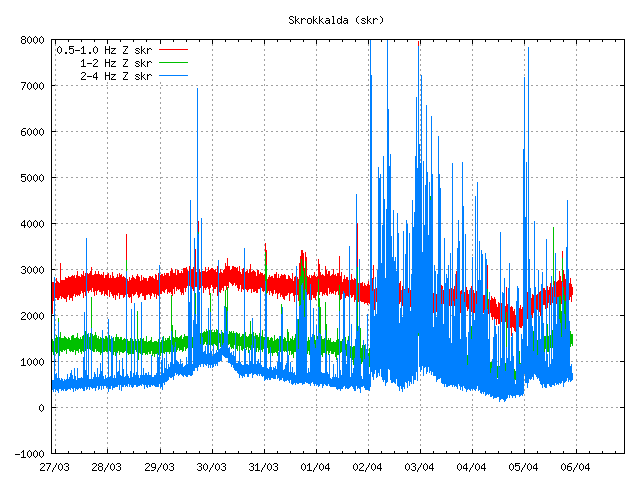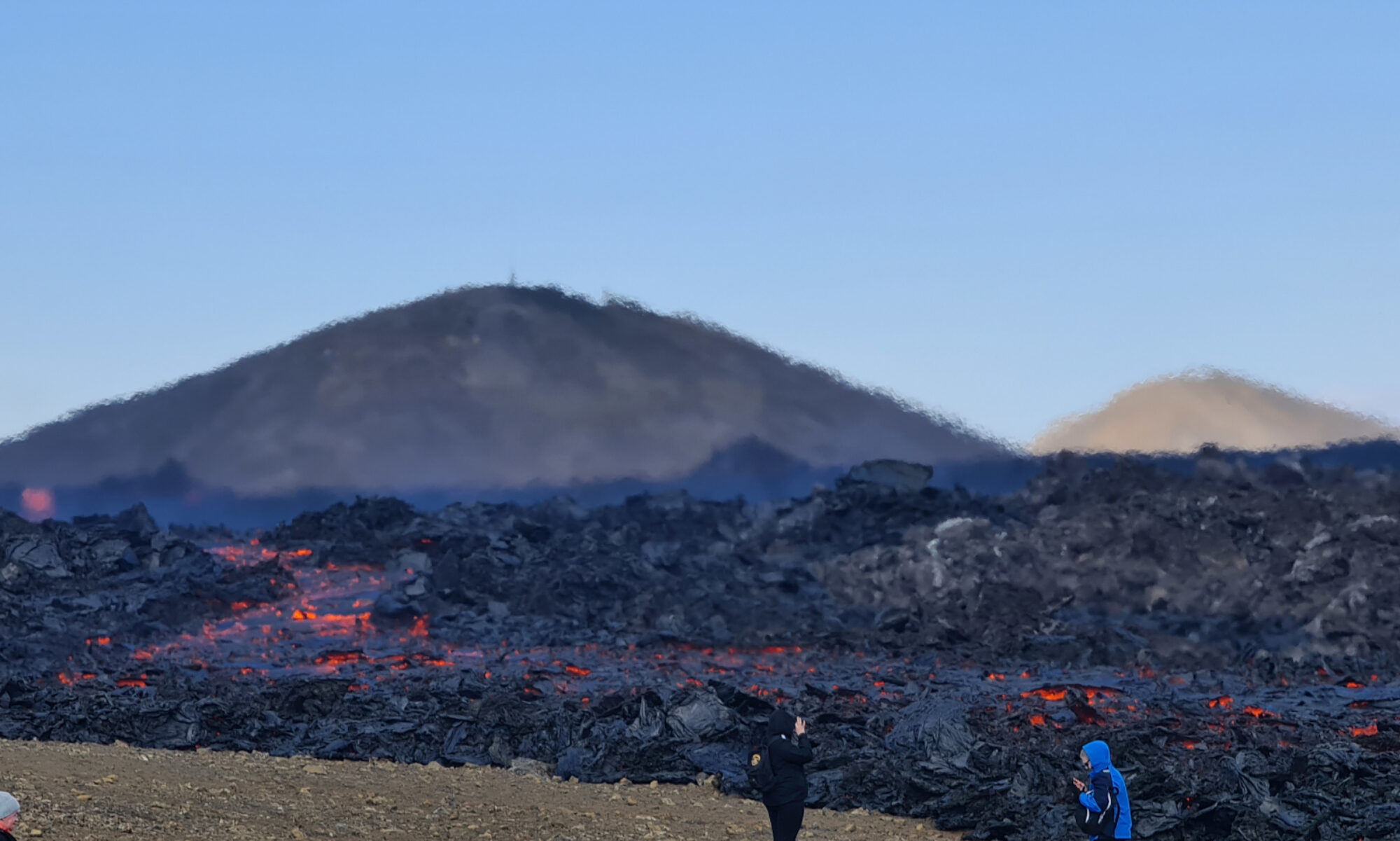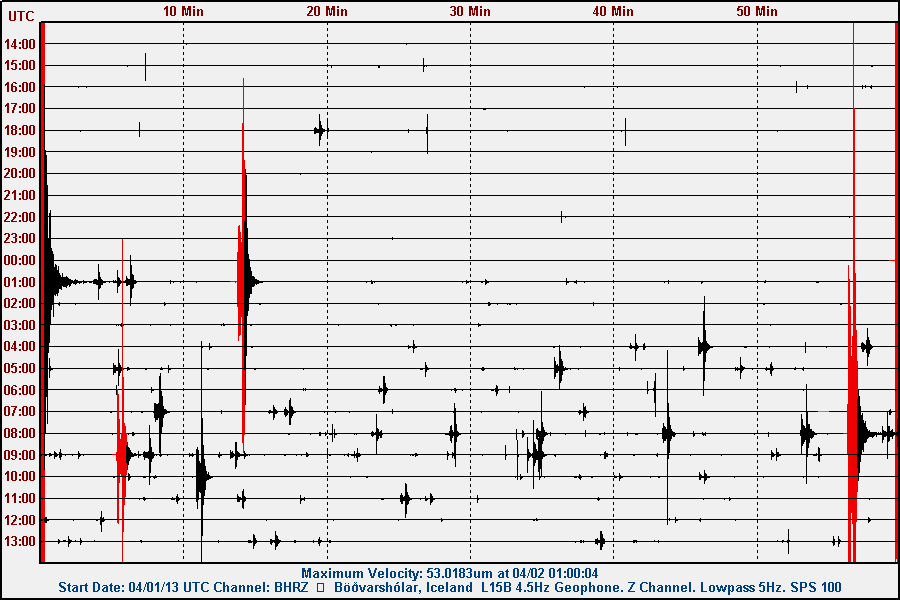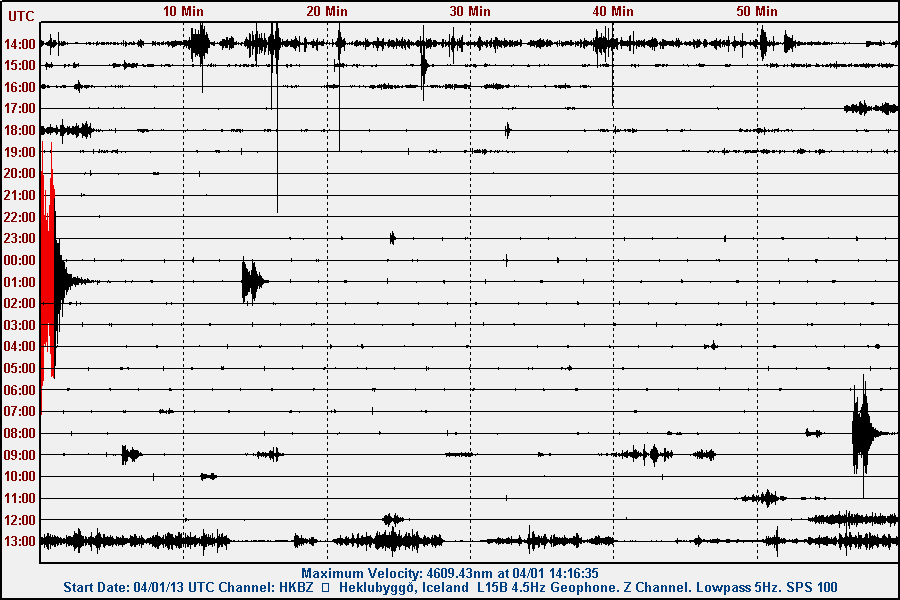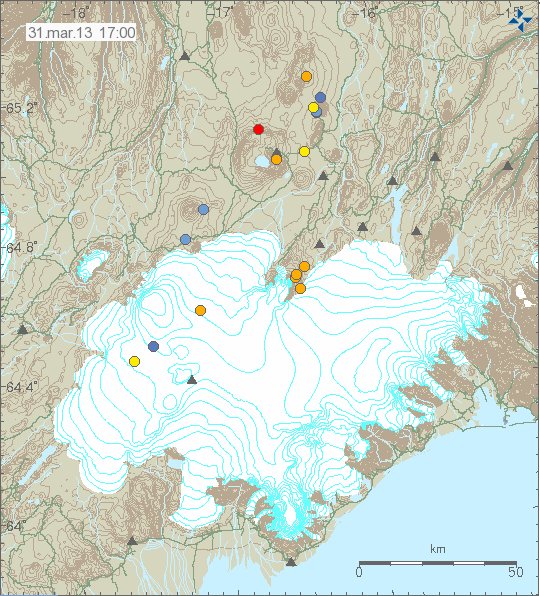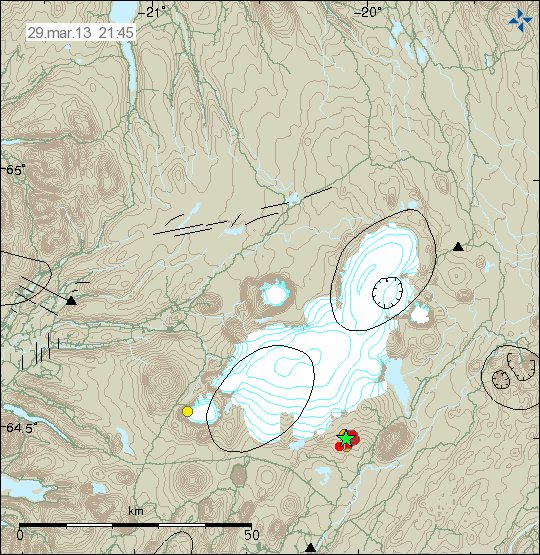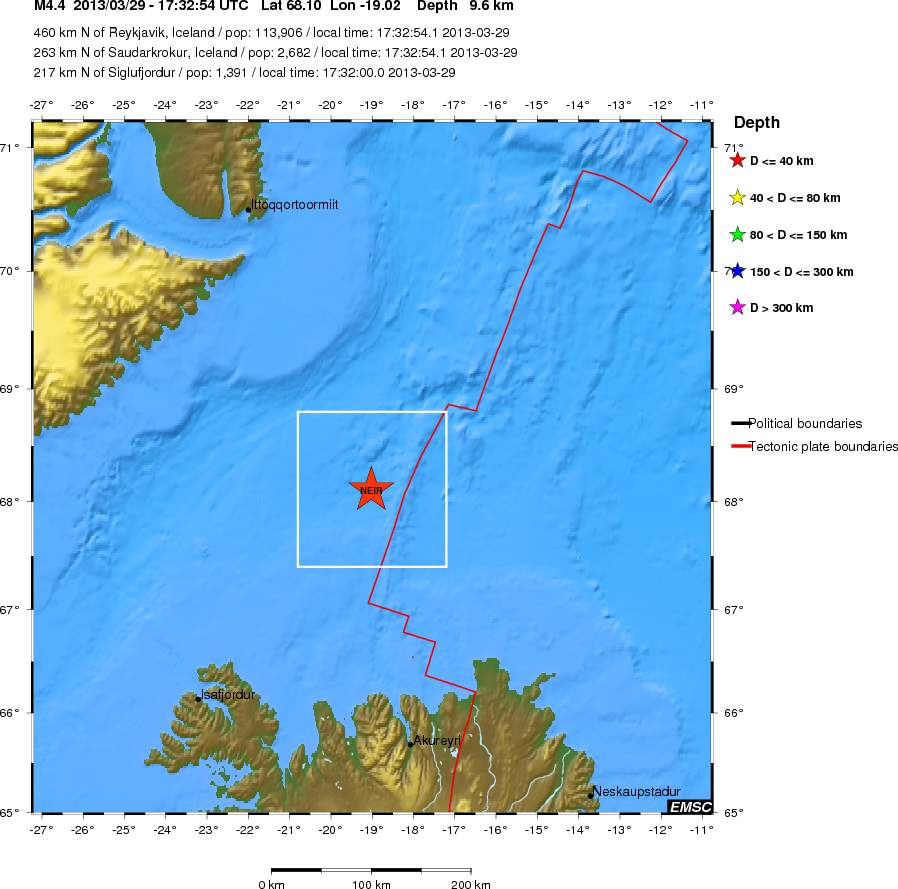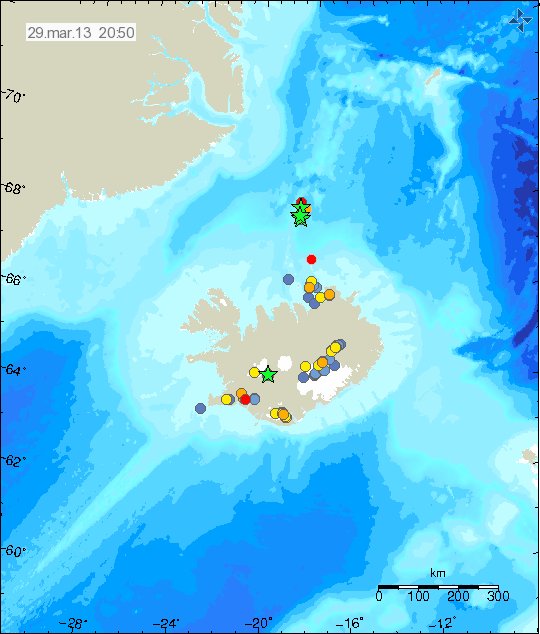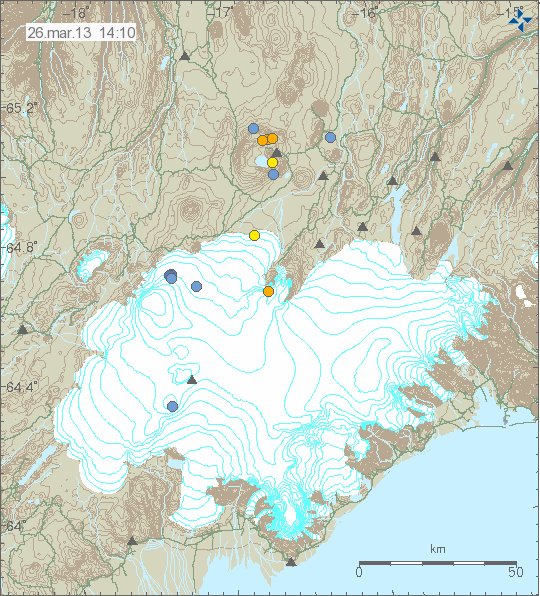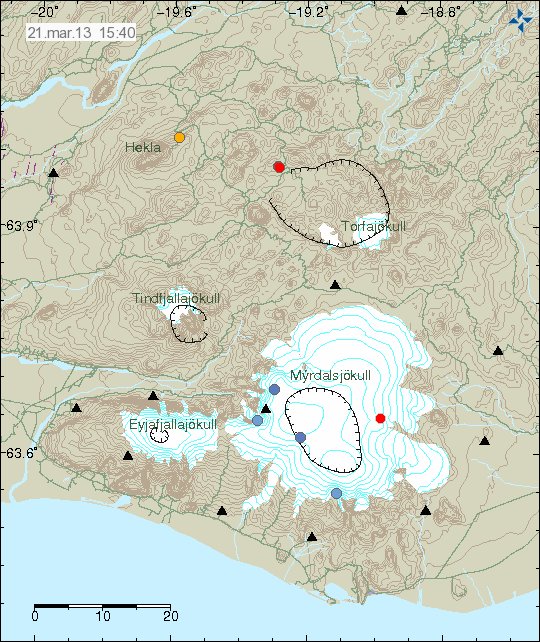This is a short update on the TFZ earthquake swarm. There is no point in making a long update about what is taking place in TFZ at the moment. Since information gets outdated quickly during this earthquake swarm.
About 775 earthquakes have been recorded by Icelandic Meteorological Office since this earthquake swarm started on 2. April 2013 (about 48 hour period). This number is going to be outdated soon or already is outdated by the time this blog post gets published. Since there are about 40 – 60 earthquakes every 1 hour currently. The earthquake swarm however drops regularly in terms of activity. Over 80 magnitude 3.0 earthquakes have been recorded so far. This number is going to increase if this earthquake swarm continues as it has been doing for the past 48 hour period.
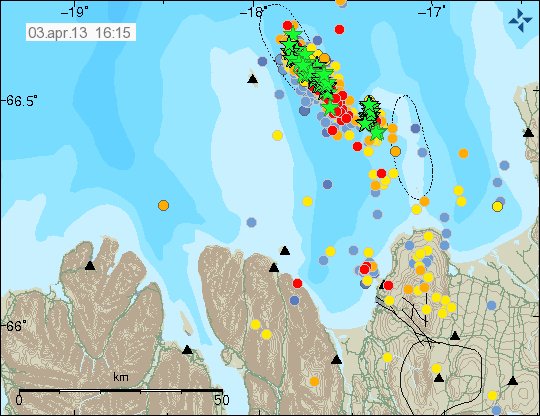
The earthquake activity in TFZ. The green stars show the earthquakes with larger magnitudes then 3.0. There is a second fault that has gone active since the earthquake activity started yesterday (02.04.2013). Copyright of this image belongs to Icelandic Meteorological Office.

As can be seen here. The earthquake swarm has been really powerful at times. Copyright of this image belongs to Icelandic Meteorological Office.
This earthquake swarm is the largest one in the area for long time now. At the moment there are no sign about that this earthquake swarm is about to end any time soon.
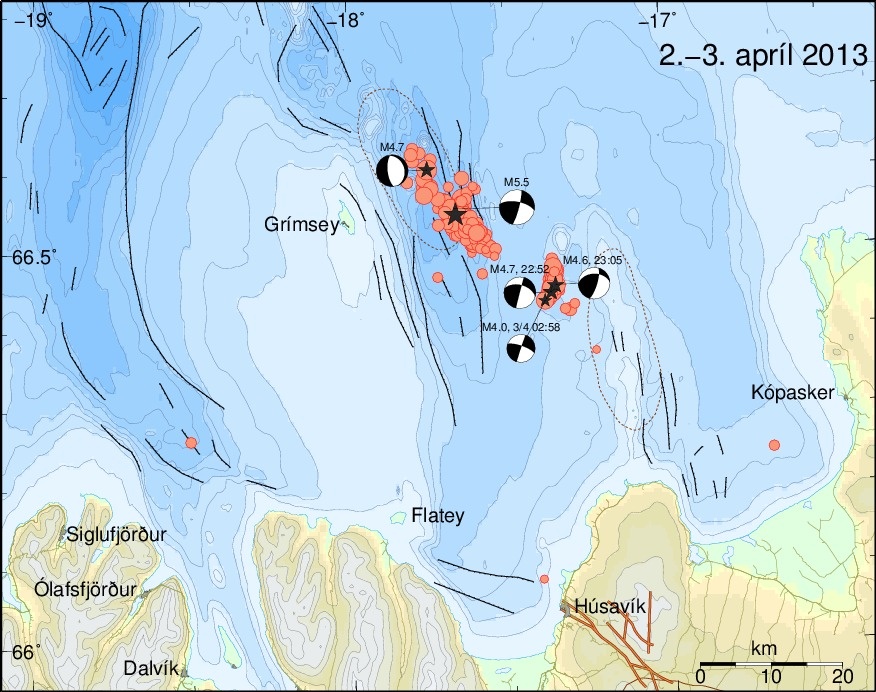
Map showing the largest earthquakes in this swarm. Copyright of this image belongs to Icelandic Meteorological Office.
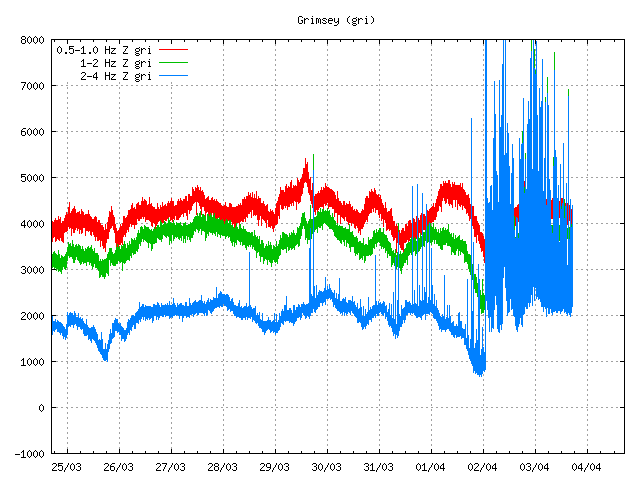
Earthquake activity as it appears on Grímsey SIL station. Copyright of this image belongs to Icelandic Meteorological Office.
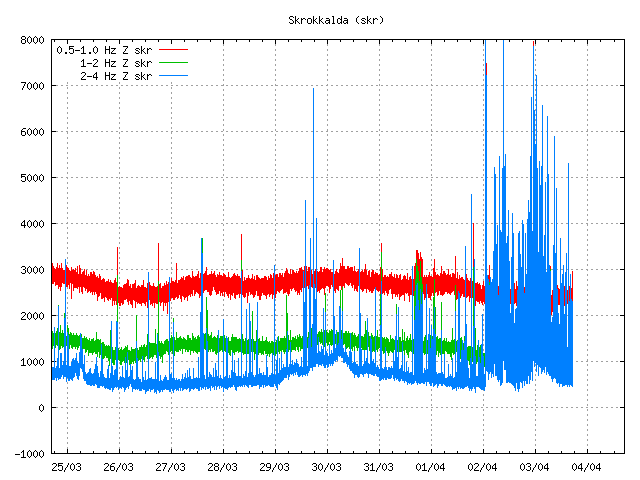
Earthquake activity as it appears on Skrokkalda SIL station. Copyright of this image belongs to Icelandic Meteorological Office.
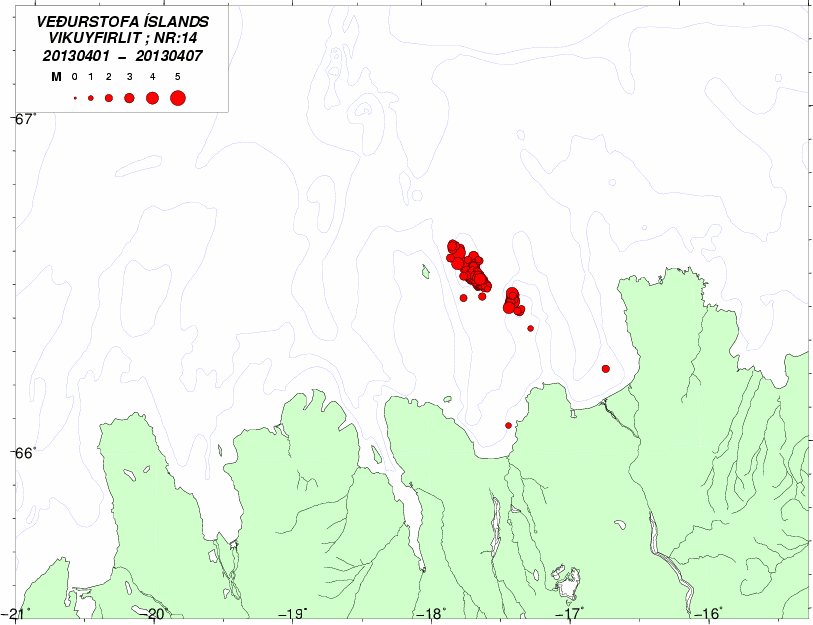
Reviewed area of earthquake activity on TFZ. This map does not show the current earthquakes. It is few hours old also. Copyright of this image belongs to Icelandic Meteorological Office.
This earthquake swarm is complex and might last for a long time. There is a continued risk of a large earthquake in this area. But there has not been a earthquake larger then magnitude in this part of TFZ since 1910 at least. So this area has a lot of build up stress. Since there has not been a strong earthquake there for a long time. But the magnitude 5.5 earthquake and the following aftershocks have just released tiny amount of the stress that has build up in this area.
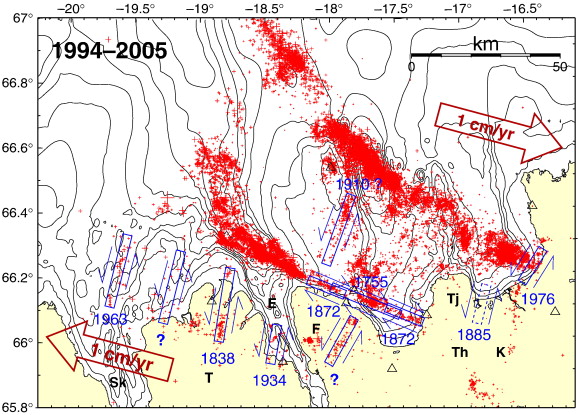
Map showing historical earthquake activity in TFZ. The image is from here. Copyright of this image belongs to Gunnar B. Gudmundsson, Pall Halldorsson, Ragnar Stefansson and other connected people.
For the moment. It is just best to keep watching the activity that is taking place in TFZ. It is impossible to know for sure what happens in TFZ during the next few hours to days.
Other news about this in Icelandic.
Um jarðskjálftana austur af Grímsey (IMO, Icelandic)
Jarðskjálftahrinan við Grímsey heldur áfram (IMO, Icelandic)
Update 1: Here is a focal depth of the earthquakes for the past 15 days.
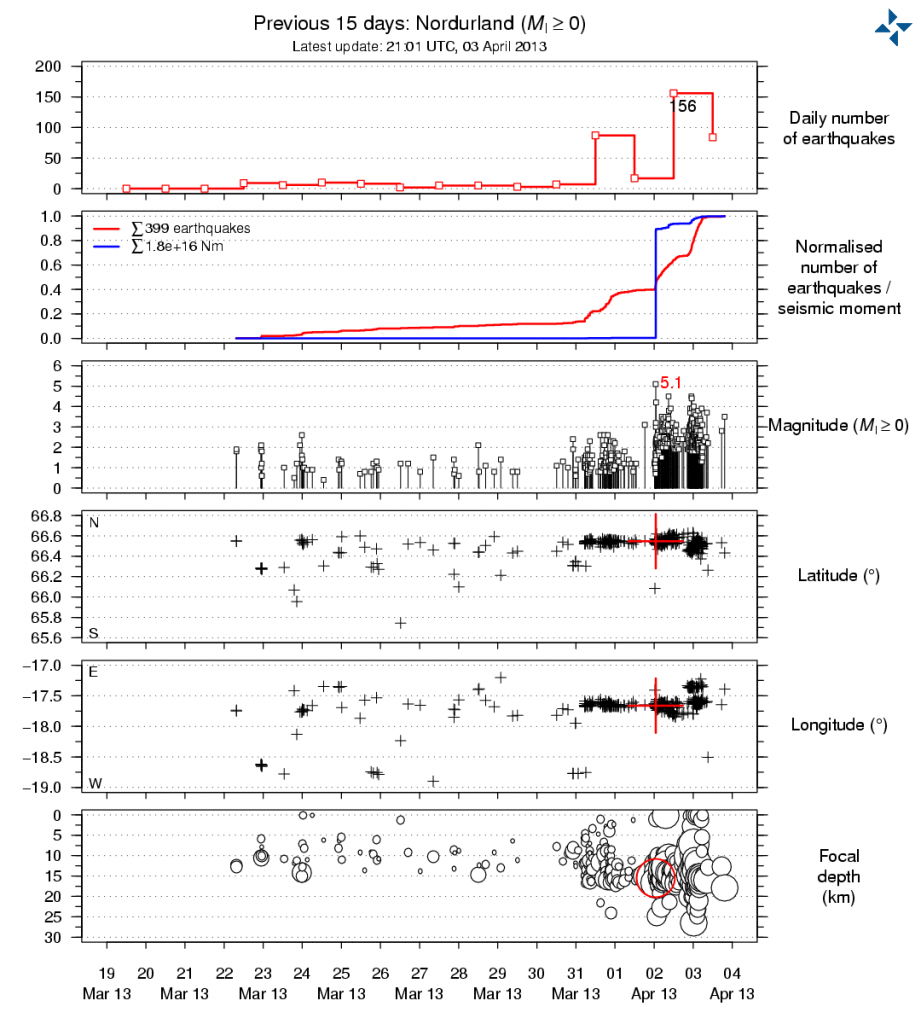
This is the focal depth and number of earthquakes for the past 15 days in north Iceland. This might not show all earthquakes that have happened in this area. Copyright of this image belongs to Icelandic Meteorological Office.
Blog post is updated at 21:17 UTC.
